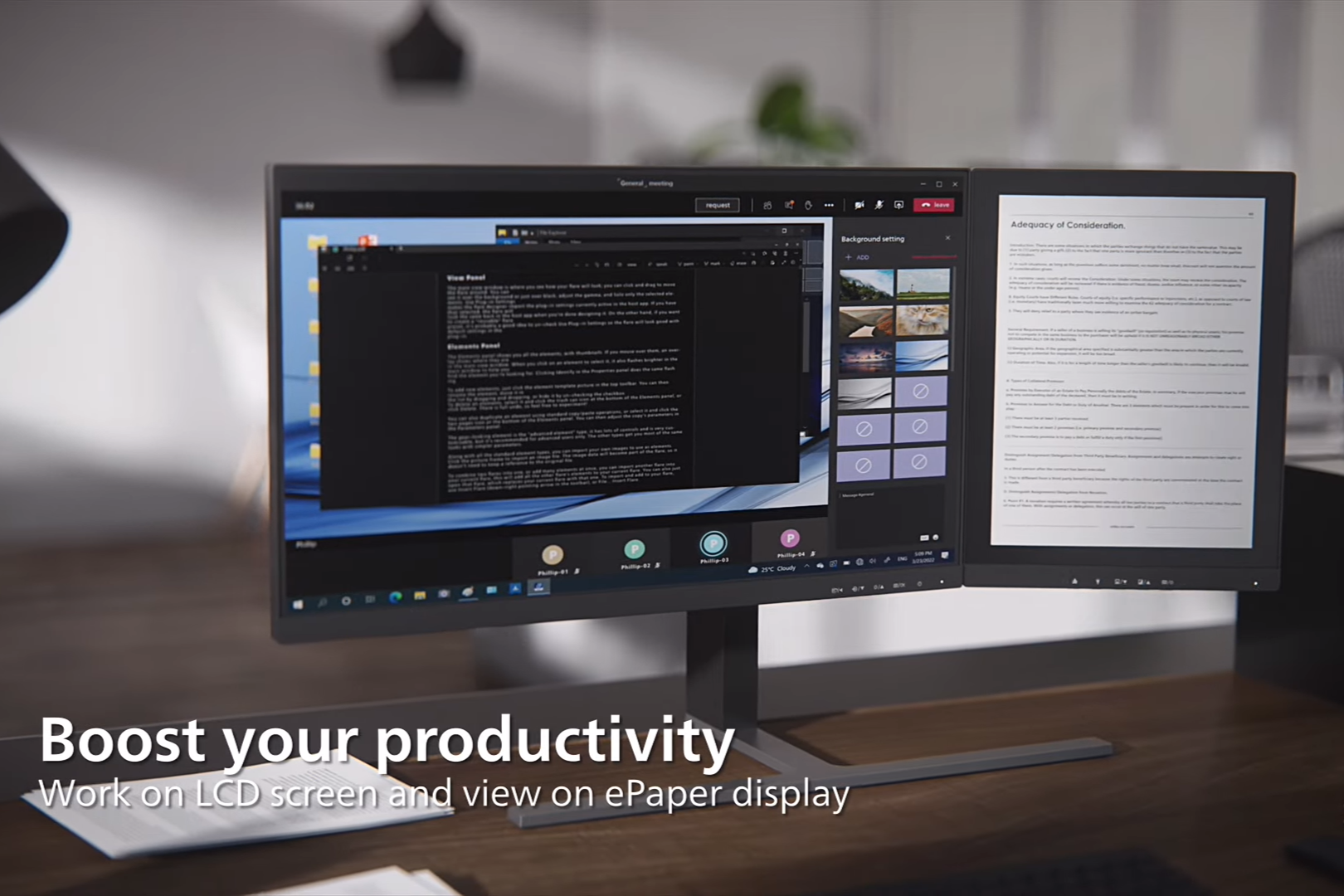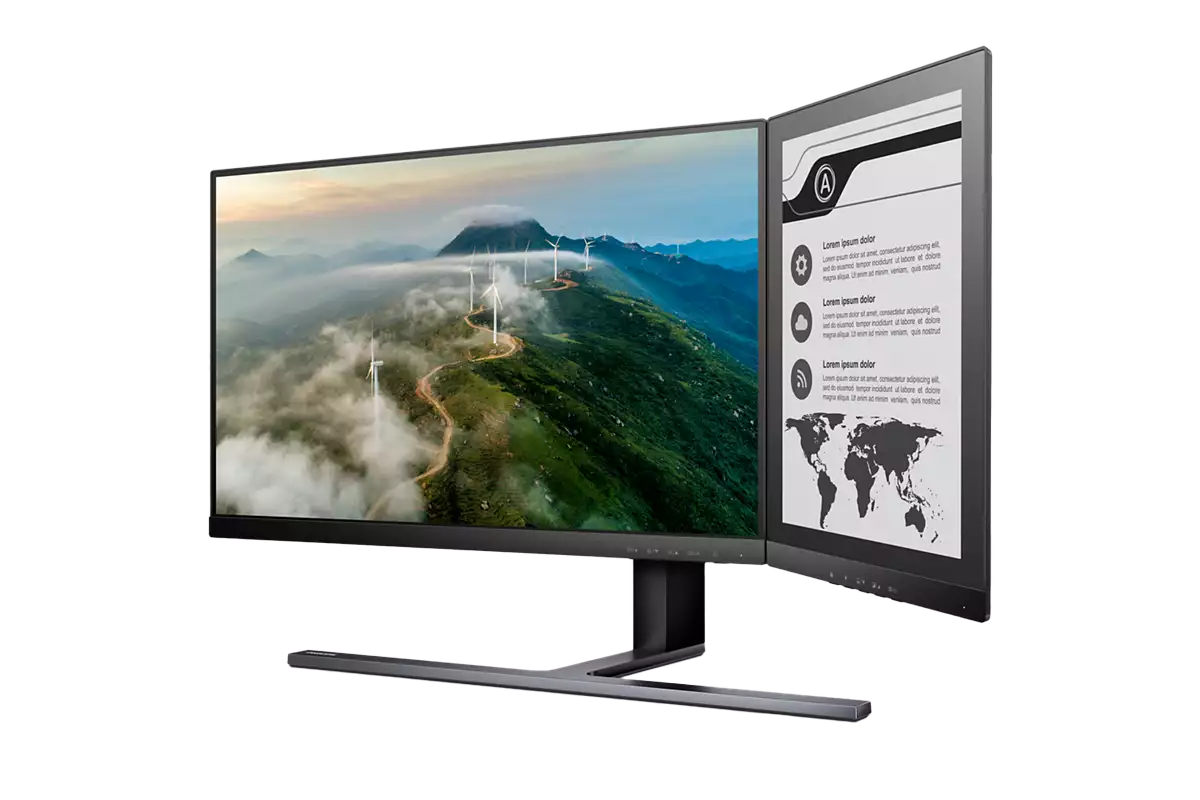Innovation comes in many forms and from many places, and Philips is shaking up the PC monitor market in a pretty unique way. Recently, the company launched the Philips 24B1D5600 monitor, which is in fact two completely different screens in one. Indeed, the Philips 24B1D5600 is labeled as a 24-inch monitor, but that's only referring to the LCD panel, and that's only half the story here. Appended on the right side of the LCD is a 13-inch E Ink display.
Traditional monitor displays can really wear down your eyes. These displays emit light, particularly blue light, which can cause your eyes to get dry or tired, leading to headaches if you're using that monitor for a long time. E Ink, however, is a type of electronic display that has very similar properties to paper. E Ink panels don't usually have their own source of light. Instead, they reflect the light that shines on them, which makes for a more natural-feeling experience that causes a lot less strain. They also often have matte coatings that soften the reflections of external light to make reading even more comfortable.
E Ink panels have obvious downsides, like limited to no color support and slow response times, which makes them unusable for most computer tasks. However, the idea here is that if you're using this monitor during extended periods of time, you can use the E Ink screen to display a document or static information, while using the primary LCD for getting work done. You can read up on a document on the E Ink display while writing a report on the LCD, for example. The E Ink panel is attaches with a flexible hinge, so you can fold it up to 45 degrees for a more comfortable viewing experience, too.
The idea of mixing traditional displays with an E Ink panel isn't new, and it's something we've seen in a couple of products, but not really in a traditional monitor. Lenovo showed off the ThinkBook Plus Twist earlier this year, a laptop that has a regular OLED display on one side and an E Ink panel on the other, so you can choose between what makes more sense at any given time. However, this Philips' approach is still pretty unique, since both screens are permanently attached side by side.
On the more technical side, the Philips 24B1D5600's LCD panel has Quad HD resolution and a 75Hz refresh rate, while the E Ink panel comes in 1200x1600 resolution, resulting in a vertical 4:3 aspect ratio. The E Ink panel supports 4-bit grayscale which should be enough for displaying text smoothly, but it's not meant for anything beyond that.
As reported by Gizmodo, the Philips 24B1D5600 is available for around $850 in China, but it has yet to launch North America, and the cost of importing one is significantly higher (currently going for $1,600 on Good E-Reader). Documentation and promotional videos are available in English, but it's unclear if the company plans to launch this product in other markets.


